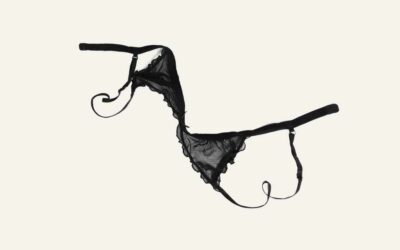“I don’t wear red underwear.” Linda Ronstadt said as she sat for the cover of Rolling Stone. Behind the camera? The queen of photography herself, Annie Leibovitz.
Leibovitz assured Ronstadt she would see the images featuring her in red lingerie prior to their release. Ronstadt slipped into the red chemise and posed with one strap undone.
After the shoot, Ronstadt still felt uncomfortable with the sexy red chemise. But Leibovitz and Rolling Stone ran them anyway.
Or so the convoluted story goes. The magazine and Leibovitz both refute Ronstadt’s claims.
Following the scandal, Ronstadt changed the cover of her later album Simple Dreams. The reason? She didn’t want the image to represent her. “It’s hard to live up to that,” the singer said in her 2019 interview with Rolling Stone.
If anything, the story is a culmination of the power we’ve assigned to red lingerie. It’s featured in Valentine’s ads, sex shop billboards, Victoria’s secret displays. Red lingerie is synonymous with lust, passion, and sex appeal.
Ronstadt understood the pair had the power to change her image forever.
But why? Read on to discover the science- and history- behind how red became the go-to color for our most intimate clothing.
The Science of Color Attraction
 Ancient Egyptians wrapped their mummies in red cloth. The Spartans wore scarlet cloaks into battle. Throughout the ages, red signified status and identified those in the highest positions of political, financial, and religious power.
Ancient Egyptians wrapped their mummies in red cloth. The Spartans wore scarlet cloaks into battle. Throughout the ages, red signified status and identified those in the highest positions of political, financial, and religious power.
Red is a real showstopper.
Literally. Alerts of all kinds are painted in red because they grab attention. But why?
Science has a simple explanation: red’s longer wavelength of light makes it the most visible color on the spectrum. Stop Signs. Traffic lights. A “red flag”. Red makes us stop and take notice.
The hue doesn’t just affect us physically, either. Red impacts us psychologically.
On the flip side? Hetero women were just as likely to rate men dressed in or surrounded by red as more sexually appealing or of a higher status.
The conclusion? Red has a biological pull on our attention- especially in terms of our sexual awareness.
The Color of Red: From Beetle to Bedroom
In the 16th century, something happened to change the course of the textile industry completely- the discovery of a tiny insect native to Mexico.
By this time, the wealthy and powerful were demanding expensive garments with exacting standards for colorfastness and hue. No longer content with the shades produced by old world methods, the powerfully vibrant and lasting dye made from Mexican cochineal upended the fashion industry.
Durable and easy to transport, demand for the new commodity would upend the supply chain and lead to a thriving global trade- lasting until the discovery of synthetic dyes.
Accessibility and demand meant red was showing up more…including in the bedroom.
Red Petticoats to the Red Valentine’s Day Teddy

Chances are, you own at least one piece of lingerie in crimson. Even though sales of neutral colors outpace the sale of red lingerie, red’s association with our most passionate encounters has secured its place in the modern woman’s top drawer.
Today, black, white, and neutral colors are more practical for our modern clothing styles. But there was a time in history where women preferred red undergarments for less-than-sexual reasons.
Underneath billowing, expansive gowns stitched from yards of fabric, the women of centuries ago wore nothing but petticoats. So what was she to do when her monthly flow came? Without underwear, most sanitary methods for a woman’s menstruation from this period were hit and miss. A red petticoat was employed to hide menstrual blood.
As we head into Valentine’s Day, it’s curious to see how red has gone from aristocratic fashion, to practical implementation, and risen to the height of sexiness.
Plan to toss aside the beige panties to heat things up with a fiery red teddy or burgundy silk kimono? We recommend reading RBH Creative Director (and boudoir photographer)’s Guide to Lingerie styles for every body type here.




